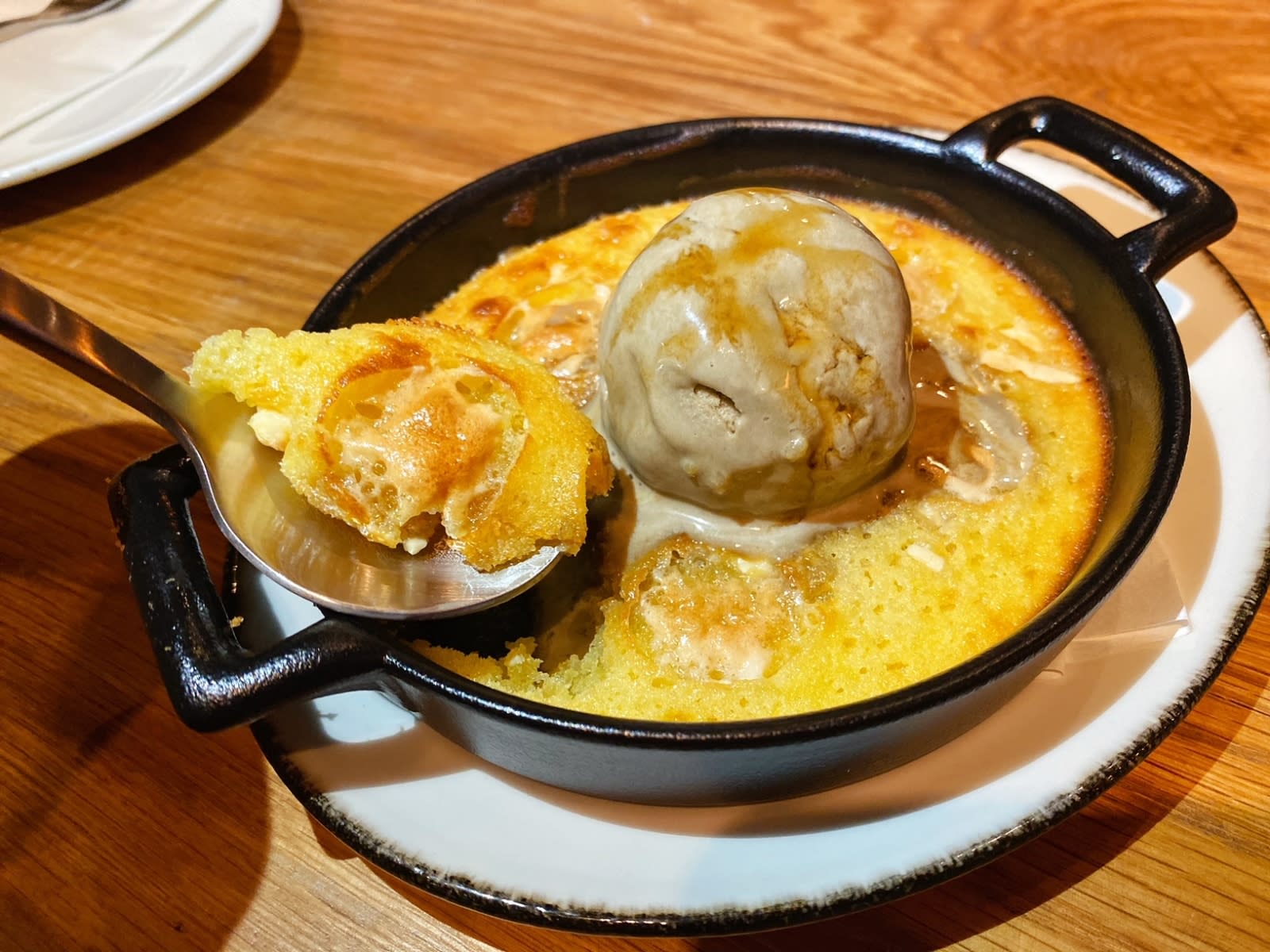In light of COVID-19, we encourage diners to take precautions when going out. You can also support your favourite restaurants by getting takeaway and delivery.
Roji, a chic, modern izakaya, recently opened its doors this month. Named befittingly after the term roji ura, which means “secluded hideaway” in Japanese, the restaurant is tucked away behind a narrow alleyway in bustling Lan Kwai Fong. It occupies the same space as the former Brickhouse and is owned and operated by husband-and-wife team Xuan and Agnes Mu. Xuan is also a founding member of Maximal Concepts, which once operated the popular Mexican hang-out.
The contemporary izakaya features a menu using premium Japanese ingredients executed with a French twist, a concept that holds deep meaning for Agnes. The youthful, exuberant co-founder muses that her parents had their first date at a secluded little izakaya in a similar alleyway in Tokyo, so she hopes to create a restaurant that pays tribute to the start of their relationship. Being bicultural, she also wants to celebrate her French heritage by incorporating classic French elements like browned butter into the dishes.

From left clockwise: red bean, strawberry highball, mugi punch, saketini, kinome
We started our meal at the bar with some bubbly highballs and cocktails. There are four highballs on tap and an assortment of other tipples with more unique flavours.
We loved the refreshing strawberry highball ($75), a blend of strawberry shochu, fig and jasmine tea. Adorned with a giant fig leaf, this ice-cold, fizzy drink is light on sugar and very easy-drinking. The mugi punch ($120), made with barley shochu, Matusalem rum, bonito, lime and milk wash, has a slight savoury taste, while the kinome ($120), a blend of vodka, Fernet Hunter, coconut and citrus, leaves a pleasant, subtle coconut taste on the palate. The red bean ($135), a slightly smoky blend of Ezra bourbon, sesame shochu, red bean, hojicha and bitters, packs a boozy punch, while the saketini ($125), made with sake, applewood gin, bergamot, akvavit and cucumber, is on the sweeter side.

The hamachi ($168) is dressed in salmon roe, black kombu salt, shiso flowers, fried garlic flakes and a sprinkling of bottarga. The contrasting textures and flavours made for delicious bites.

The scallops ($138), torched lightly and dressed in a blend of yuzu, dashi and browned butter, are on the sweeter side and, somehow, reminded us of dessert. Thin batons of celtuce add crunch.

Usually, fried soft-bone chicken uses cartilage taken from the knees, but Roji’s rendition uses cartilage from the middle of the breastbone, making each battered morsel a more substantial bite. The cartilage ($98) is dressed in yuzu salt, pairing well with Roji’s cocktails.

A deconstructed negitoro roll, the torotaku ($158) is a dollop of minced tuna and scallion topped with yellow daikon and crispy nori. The idea is to grab and fold the nori around the tuna as you pick up each piece, although it worked well for us using chopsticks too. The aroma of sesame oil overpowers the scallion, giving this a different flavour profile compared to the classic negitoro roll.

Fried chicken is a must-order at an izakaya, and the chicken katsu ($168) did not disappoint. Made using thigh meat, the breaded chicken was juicy and tender, made especially scrumptious with a smidgen of sweet-and-tart tonkatsu sauce.

The hero of the meal had to be the giant clams ($198), simmered in sake and a special “Roji broth”. We definitely detected the sweetness of mirin in the broth. Topped with a mountain of green onion and a dusting of shichimi, the giant clams were incredibly meaty and packed with umami juiciness. This is a truly addictive dish, with the sweet mirin playing against the savoury clam juice. And each clam was the size of our palm!

Presented like a stew, the A4 Wagyu ($298) comes with tender vegetables that are thoroughly infused with a light shiso-ponzu broth. Although the beef was juicy and packed with meaty flavour, the highlight for us was the vegetables.

King crab legs ($248), dressed in mustard mayo, panko and a blend of parsley and shiso, are thoughtfully cut into bite-sized morsels for easy sharing. The crabmeat was sweet, although a tad on the dry side.

The seafood box ($268) is a treasure trove of flavours and textures, including sweet snow crabmeat, briny ikura, slippery mushrooms, crunchy daikon, chewy octopus and a uplifting bouquet of garden cress and shiso. Flavoured with red vinegar and dashi, the plump kernels of rice blend all the ingredients into cohesive and delicious bites. This dish was one of our favourites of the meal.

Ending on a sweet note, the skillet pancake with homemade hojicha ice cream ($148) was hard to stop eating at just one bite. The cake-like pancake goes well with the hojicha flavour, although we wished we had two scoops of the delicious ice cream instead of just one!
Verdict
Not all dark alleys are fearsome – some lead to a tasty meal. Although we’re not crazy about the location, we do appreciate the mystique of walking into an unmarked alleyway to find a chic little eatery serving up unique cocktails and food. Roji offers a strong-enough menu to make it more than just a bar for drinks – it provides a great night out spent with good food and, hopefully, good company.
20A D’Aguilar Street, LKF, Central, info@rojihk.com (no bookings)
This write-up is based on a complimentary media tasting provided in exchange for an honest review and no monetary compensation. The opinions expressed here represent the author’s.
For more reviews like this, like Foodie on Facebook

